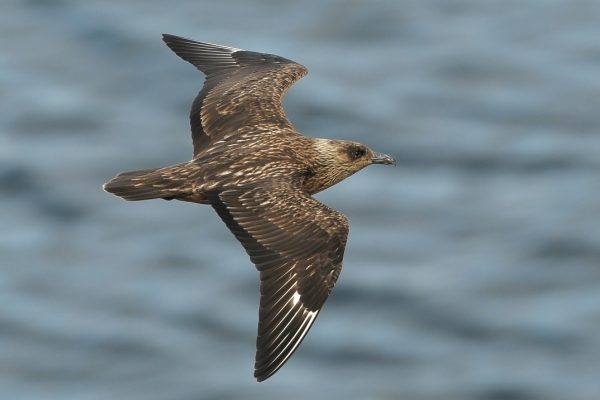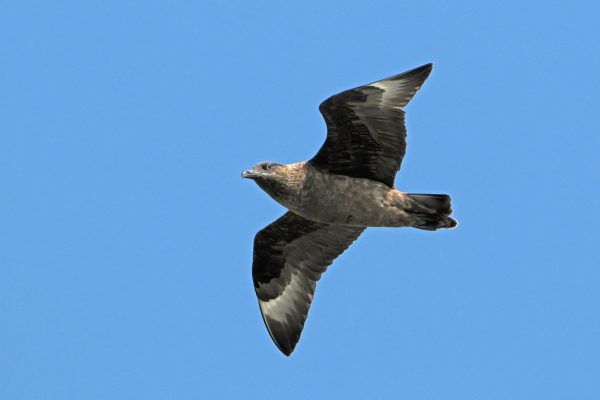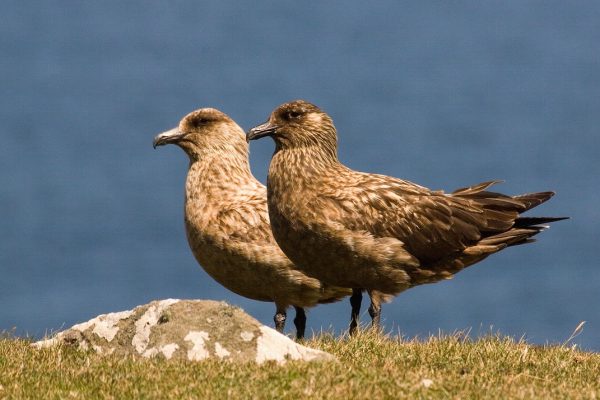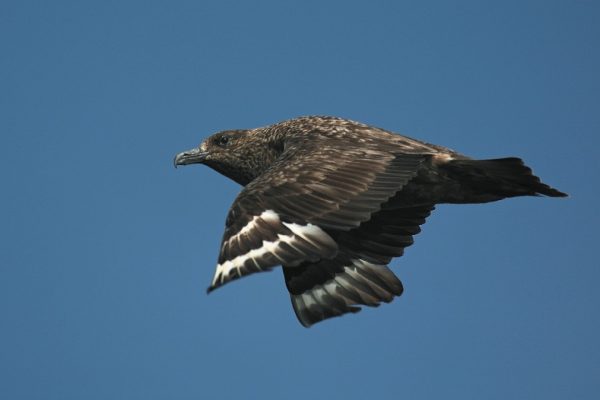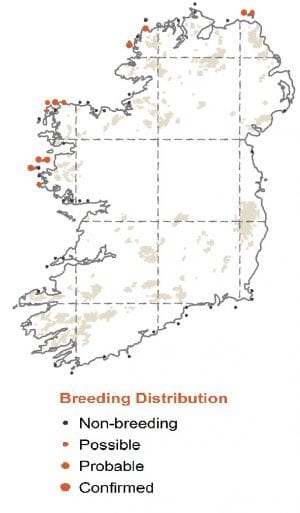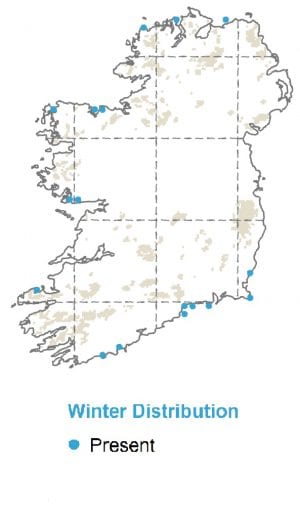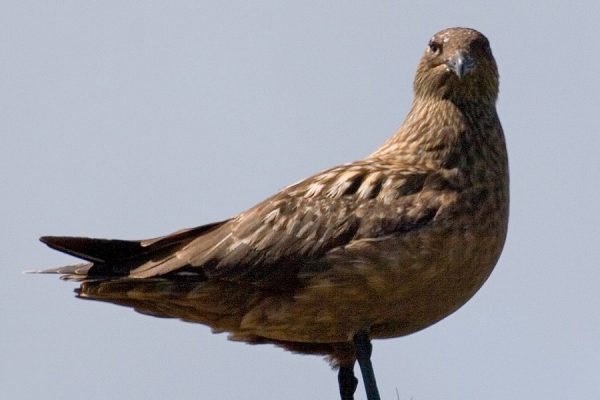
Great Skua
| Irish Name: | Meirleach mór |
| Scientific name: | Stercorarius skua |
| Bird Family: | Skua |
amber
Conservation status
Conservation status
Status
Passage migrant off all Irish coasts from April to October. A few pairs breed on isolated islands off the west coast.
Identification
A gull like bird, similar in size to the Herring Gull, but heavier and more powerfully built. Heavy bill, neck, head and body. Broad wing bases and short tail. A dark bird with prominent white flashes in the outerwing (at the base of the primaries) visible both above and below. Adult bird coarsely streaked, especially on the upperparts. Juvenile birds are more uniformly brown than adults and show less conspicuous white flashes in the wings. Parasitic in tendencies, chasing other birds until they drop their food. Will grab wing tips of birds, for example Gannets, and tip them into the sea. Also predatory, will take the young of other birds. Fiercely defends nest in the breeding season with relentless dives at intruders, including humans, sometimes making contact with their feet. Will also stand with wings held above the back in a threat posture on the breeding grounds if other birds approach too closely.
Voice
Only calls on the breeding grounds, where it gives a single or short series of nasal calls.
Diet
Fish, either taken from other birds or from the sea or from behind trawlers. Carrion and birds also taken.
Breeding
Only one or two pairs breed in Ireland. They probably first colonised Ireland in the late 1990s and now breed on a number of uninhabited islands of the west coast. This has followed on from a range expansion from their strong holds in the north of Scotland into the western isles of Scotland. Scotland is internationally important for the species with over 9,000 pairs of an estimated 16,000 pairs in the world breeding there. The species form loose colonies on coastal moor land, usually associated with seabird colonies, from which they gain an important component of their food.
Wintering
Winters out to sea. Usually not visible from land in the winter months.
Monitored by
Breeding seabirds are monitored through breeding seabird surveys carried out every 15-20 years.

